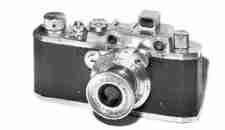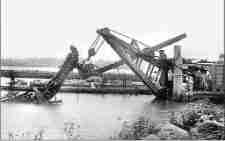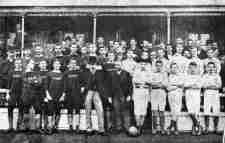
the late Willi Nassau -1922 to 2022 – Charter Member #52
Toronto. Editor Bob Lansdale came up with many ideas to promote our 25th Anniversary, especially for the journal. One idea that popped up in issue 25-5 was to have some long time members write about the society or collecting as it related to them. Bob titled the first article, “Thoughts and memories from our members …” A select few people responded in writing.
Of the group, I chose to show the thoughts expressed by Willi Nassau, who lived to be 100 years old. I met Willi at monthly meetings and annual fairs. Willi’s collection of cameras found its way to the federal Museum in Ottawa. Since people in 2000 had difficulty loading, shooting and unloading these old cameras, Willi took some 75 short videos of the cameras for the museum. He offered them to the PHSC, willing to re-shoot them if necessary due to possible copyright issues. As far as I know we never accepted his offer.
Here is Willi’s own words about his collection: “My association with antique cameras began very differently than the norm of other collectors . I commenced my career as a professional photographer in 1939, attending classes at the Austrian State Academy for Graphic Arts in Vienna. The school required I supply my own large format camera, so I opted to buy a used 8×10 camera.
“I remember it so well; it was built by a respectable Vienna camera maker named Goldmann whom I had visited in his old fashioned workshop which had a wonderful smell of sawdust and lacquer. Large wooden plate holders with folding wooden slides were held together with fabric that occasionally leaked. A rickety wooden tripod completed my newly acquired outfit.
“My second camera was a Zeiss Miroflex 9×12 cm that used glass plates or film packs (which were very hard to obtain). Glass plates, however, were the choice of our school and had a speed of 16 degrees ‘Scheiner’ equivalent to 6 ASA. They were hand processed in a tray then scrutinized by our instructor. If our work did not meet his standards, the still-dripping plate was flung into a large waste container and we were ordered back to the studio or to the location to repeat the shot.
“The Miroflex had a remarkable focal plane shutter which, when fired, went off with the noise of a medium-sized car crash. One evening I decided to try my hand at theater photography and smuggled my camera into Vienna’s famous State Opera House. There was a period when there was little movement on stage so I chose that scene for my lengthy one-fifth of a second exposure.
“Unfortunately, the tender strains of the celestial violins was rudely interrupted by the almighty crash of my focal plane shutter. Needless to say, that ended my fledgling career as a stage photographer.
“Eventually I owned a Zeiss Ikoflex III of the 2 1/4 square format and at the end of the war, as a photographer for the British Eighth Army occupying Austria, I was assigned my first Leica. It put me instantly into photographer’s heaven.
“Time went on and I worked as a still photographer in a movie studio where again I used my faithful old 8×10 camera along with a Graflex to shoot stills for the movie The Third Man. The finished photos, referred to as Photo-Backings were used in the studio in England when recreating scenes – the large format was a must.
“Each day I would lug the cumbersome equipment through the Vienna sewers. In order to hold open the ancient shutter curtain while focussing on the mat screen, I devised a system of wedging it open with a coin – an Austrian shilling. Too often it slipped from its precarious slot and fell into the slimy muck or bounced away on the cobble stones. Such incidents provided pleasant mirth for the crew.
“In 1956 I joined the newly founded Austrian Television… their first studio was appropriately housed in a building marked: ‘Institute for the Blind’. Working for television, I was either on the cameras or shooting 16mm ciné… I never got to use my antiques any more. But when I came to Canada in 1959 I brought them along for sentimental reasons and have since added a few choice pieces from garage sales.”
Willi, member John Durst, and past president of the PHSC, Bill Belier toured Austria as discussed in a journal article. Willi retired from WLU (Waterloo Lutheran University – later renamed after Sir Wilfred Laurier and still abbreviated as WLU). In later years, Willi began collecting digital cameras before they became ‘collectibles’.
You can visit and reminisce with the other early members in the issue 25-5 pdf file on the free members-only DVD/thumb drive. It’s easy to join or renew – see membership above and at right. Send any questions to member@phsc.ca.


















